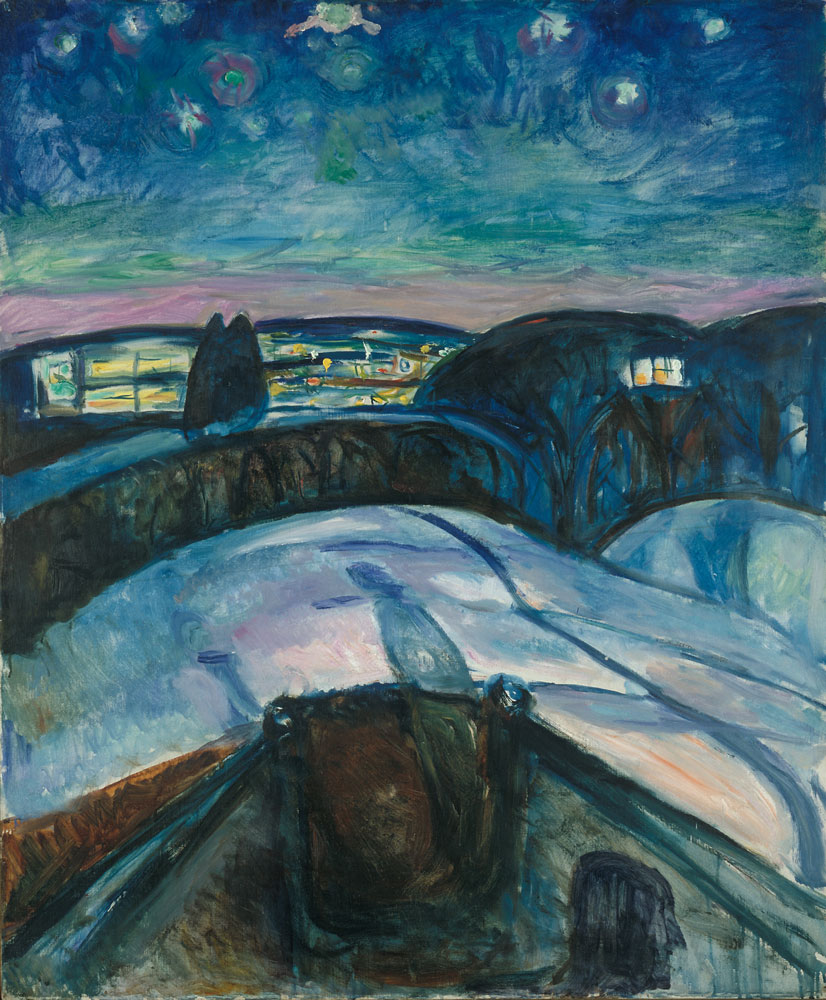
Munch: Van Gogh — Exhibition at The Van Gogh Museum

Ask any artist or art enthusiast to name their favorite artists and invariably Vincent van Gogh will spring to mind. As an art student I was enthralled by his life and inspired by his artistic contributions. In spite of his lack of career success during his lifetime, he is viewed as one of the most influential Post-Impressionist artists to have laid the foundation of modern art.

Vincent van Gogh, Self-Portrait with Grey Felt Hat, oil on canvas, 44.5 cm x 37.2 cm, Van Gogh Museum, Amsterdam (Vincent van Gogh Foundation).
Vincent van Gogh’s legacy lives on at the Van Gogh Museum in Amsterdam where he continues to have a prominent impact on the world. The museum achieves its mission to make the life and work of this extraordinary artist accessible to as many people as possible and to provide them with education and inspiration. In December 2014, the museum reported more than 1.6 million individuals from around the world had visited the museum during that year.
Scores of people have been visiting Munch: Van Gogh, an exhibition that offers a stunning juxtaposition of two major artists. The exhibition which runs through January 17, 2016 is the first of its kind. It draws fascinating parallels and similarities between the two artists. Munch: Van Gogh is the result of years of in-depth collaboration and research by the Van Gogh Museum in Amsterdam and the Munch Museum in Oslo.

Edvard Munch, The Scream, 1893. Munch Museum, Oslo.
Although they never met, Vincent van Gogh (1853-1890) and the Norwegian artist Edvard Munch (1863-1944) shared similar visions in their art and life. When viewing more than a hundred important works of art by these artists, it is clear that they were kindred spirits. Their art can be characterized as colorful, emotionally charged and intense. Their paintings The Scream and Sunflowers are among the most important cultural icons in art history.
Both men were deeply engaged in pursuing profound existential questions. They were preoccupied with the cycle of birth and death, fear, human suffering, solace, hope and love. To that point several major works of art featured in the exhibition include The Scream, The Sick Child and Madonna by Munch; and Starry Night over the Rhône, Patience Escalier (‘The Peasant’) and Garden of the Asylum by Van Gogh.
In addition to their compelling works of art, the artists’ words also leave an indelible impression on us. They proved they were not only painters, but also writers of letters and literary texts and they frequently connected the two art forms. In this exhibition quotes from both artists adorn the walls of the museum. They inspire visitors to write their stories on special plaques in the stairwell.
More similarities between the artists are brought to light. Both artists lived in the same neighborhood in Paris (Montmartre) and also moved in the same artistic circles. During their respective periods in Paris, Edvard and Vincent each discovered Impressionism and Post-Impressionism, the key movements in modern French art at the time.
Their sources of inspiration were also connected by having admired the portraits of Edouard Manet. Both artists viewed Manet as an important leader in the direction of painting. Furthermore, both artists explored photography and Japanese prints which had noticeable influences on their styles and subjects.

Edvard Munch, Starry Night, 1922. Munch Museum,Oslo.
We know that Vincent and Edvard aimed to produce solid, cohesive bodies of art that were unified in themes. Van Gogh achieved this in his series of Sunflowers and his collection of art that focused on day and night themes. Many of his paintings were connected in their relationship to growth and decay, nature and civilization. Munch also accomplished a congruence among his series of paintings about life and death which he referred to as his Frieze of Life.
An unfortunate similarity between Vincent and Edvard is they suffered from illness throughout their lives. And, the artists shared the belief that if you totally surrendered to your artistic passion and devoted your life to art, you could not lead a ‘normal’ social or love life. Both men were unfulfilled in their personal lives and remained unmarried and childless. Sadly, Vincent committed suicide in 1890 at the age of 37, while Edvard led a long reclusive existence until his death at age 81.

Vincent van Gogh, Self-Portrait as a Painter, oil on canvas, 65.1 cm x 50 cm. Van Gogh Museum, Amsterdam. (Vincent van Gogh Foundation).
In 1933 Edvard Munch wrote: “During his short life, Van Gogh did not allow his flame to go out. Fire and embers were his brushes during the few years of his life, whilst he burned out for his art. I have thought, and wished – in the long term, with more money at my disposal than he had – to follow in his footsteps.”
Indeed both artists endured grave personal losses; however, Vincent van Gogh and Edvard Munch remain among the world’s most cherished and respected legends. The extraordinary impact their art continues to have on millions are celebrated in this major exhibition. Their art has as much influence on the human experience today as it had on the artists who created it during their lives.
For more information visit the Van Gogh Museum website vangoghmuseum.nl.


































